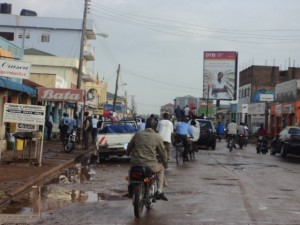
At Independence, Arua was part of the then West Nile District, which consisted of the present day Arua, Nebbi and Yumbe Districts. Under the 1974 Provincial Administration, West Nile District was divided into south Nile, Central Nile and North Nile districts. In 980, North Nile and Central Nile became Arua District, while south Nile was renamed Nebbi District.
Location
It boarders the districts of Yumbe in the north-east, the Albert Nile forms its border with Gulu and Adjumani in the east, Nebbi in the south, Sudan in the north and the Democratic Republic of Congo in the West.
Population
The district has over 855,055 people. 75,326 are Males and 409,203 are Females.
Main Languages; Alur, Lugbara, Kakwa and Madi.
Economic Activities
Agriculture with main emphasis on food crops such as millet, potatoes, beans, and cassava. Cash crops include Tobacco. There is fishing on the River Nile.
Banks; Stanbic Bank Ltd and Centenary Bank.
Education Services
The district has a total of 343 primary schools with 298 government, 19 private and 26 community schools. For secondary schools, the district has over 16 schools, 72 are government, 12 private and 22 community.
Health services
The district has 22 Government dispensaries (II), 21 health centres (III) at county, 4 health centre (IV) at sub-district and 1 hospital. More so, it has 2 private/NGO dispensaries, 22 clinics, 9 health centres (III) and 2 hospitals.
Government regional referral hospital-Arua Hospital with 278 beds, Kuluva Hospital with 160 beds. Uganda Muslim Medical Bureau-Orijini Hospital with 50 beds.
Transport Network
The district has an inadequate road network and the one existing are in poor condition and this ha greatly hampered transportation in the district. It also has an airstrip which facilitates air transport.
Tourist Attractions
There is Ajia Game Reserve which was formerly home to white Rhinos hence attracting tourists. The presence of an Aerodrome in Arua makes air transport possible for tourists.

 Posted in
Posted in 

